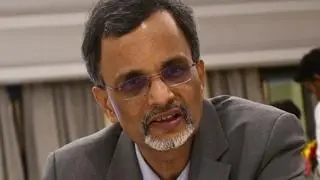Time has come for India to look at the next generation of capital market reforms that would particularly focus on shaping the country’s future debt market, Anantha Nageswaran, Chief Economic Advisor to the Finance Ministry, said on Friday.
“Capital market reforms have been one of most successful interventions of the government in the last three decades. We are at a point where we need to repeat this. So capital market reforms 2.0 has to be thought of and what kind of debt market is needed. This has to spring from a bottoms-up exercise, figuring the investment needs,” Nageswaran said at a plenary session on ‘financing future growth’ at the CII Annual Business Summit 2024 in the capital.
This bottoms-up exercise would require a holistic and comprehensive understanding of investment needs and how it would be met through a combination of equity and debt, he said.
“Debt has to come from banks and capital markets. There is need to figure out what is the appropriate debt to equity ratio that this country can look at sustainably on an economy wide basis. How much of equity is needed in the banking system and can the existing banking system provide for it. How much of more banks that need to be added. Are we adding them at the right pace? What is the kind of banking capital needed to fund that debt. What is the portion of debt that capital market can finance, and do we have instruments and market depth to do so? These are the exercises that we need to do,” he said.
Inclusion in Bond index
Nageswaran highlighted India’s upcoming inclusion in J P Morgan EM bond Index (June 2024) and Bloomberg bond index (January 2025) would lead to both inflows of patient money and somewhat not so patient monies.
“The government and the regulators have rather the unenviable task of managing both — stability aspect and financing for growth aspect. When Market participants evaluate actions of government and regulators, they need to also bear in mind that the challenges before both these entities are two-fold and are very delicate.
Sometimes it is important given our marathon we are running with respect to development that we give as much importance to stability as growth dimensions of the financial markets,” Nageswaran said.
Veteran banker Uday Kotak, who was former MD & CEO of Kotak Mahindra Bank, said that India today has a market capitalisation to GDP ratio of 1.2 to 1.3. “This is a far cry from what it can be. If India has to finance its future, capital markets will be an enormous engine for financing India’s future,” Kotak said.
“India is in a unique position that after the US, we have an opportunity to use capital market intermediation to build the financing of India’s future”.
Noting that debt is major part of capital markets, Kotak said there is need to make raising of debt far easier in India. “I feel the gap in taxation between debt and equity is wide,” he said.
Zero accident policy
He also said that a ‘zero accident policy’ is risky approach for India’s high growth aspirations and a ‘minimal accident policy’ approach would serve its growth interests better.
For India to finance growth and be truly competitive, one of the main engines for it would be continued sustenance of capital markets, he added.









